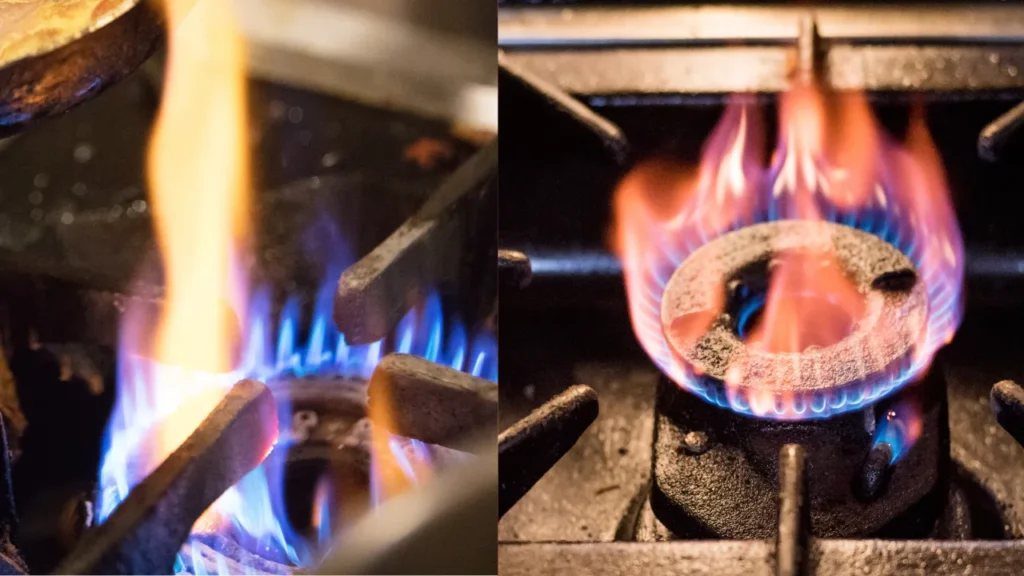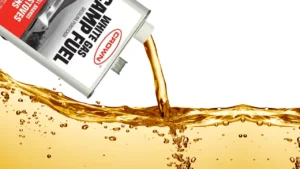When operating normally, your gas burner has a blue or transparent flame. However, if it burns yellow, it can produce higher levels of dangerous carbon monoxide due incomplete combustion.
Luckily, fixing a yellow flame isn’t too difficult.
To fix a yellow flame on a gas burner, check the cap, burner and head for dirt or debris. Ensure the stove parts are in alignment, check the orifice and test the dimmer flame. Inspect the air shutter and adjust it if needed and remove any nearby humidifiers as the minerals in the water vapor can interfere with the burner’s operation.
Before trying to fix a yellow flame on your burner, make sure your appliance is switched off completely.
1. Ensure Your Burner and Head Are Clean
A dirty burner and head is a common reason your appliance can burn with a yellow flame. However, it can be dangerous as it produces more carbon monoxide (this is why I always make sure my carbon monoxide detector is working properly).
This is because the build-up can clog the port holes and prevent it from burning with the normal blue color because the dirt forces the gas to move out of the holes with more pressure and less oxygen.
Checking if it’s clean and free of debris should be your first step:
1. Turn off the power and gas and remove the grill plate and burner plate or cap. Check the plate and port holes for dirt.
2. If you notice any grease or dirt, gently clean it off with a small soft brush or pipe cleaner and wipe it with a soapy rag.
3. Remove the base by unscrewing the 2 screws securing it in place and remove any debris.
3. Once clean and dry, replace the burner parts, being sure to replace the correctly and in alignment to let the gas flow through unimpeded.
2. Ensure The Stove Parts Are In Alignment

In addition to other causes, an incorrectly aligned burner bases and caps can prevent your stove from igniting properly or cause it to burn with a yellow flame.
Here’s how to check that these parts are in alignment:
1. Remove the gril cover, cap and burner base.
2. Then, replace the burner base by ensuring that the port hole is directly in alignment with the igniter underneath it.
3. Put the cap/plate back on and ensure that fits securely above.
3. Check the Orifice
The orifice is responsible for moving the gas fuel to the burner and this important part should be in good working order and the correct orifice type for your burner and fuel.
If the orifice is cracked or broken, consult your burner’s user manual so that you buy the correct replacement part for your model number and type. Some replacement parts fit various models (like this one from Amazon).
If you have recently replaced your orifice, the pressure regulator underneath it should also be adjusted.
As with any work on a gas stove, always shut off the gas and power supply beforehand. Also, I recommend calling a professional if you don’t feel comfortable working on your stove.
With gas camping stoves, it’s sometimes worth investing in a new one if yours is quite old and the repair work quite extensive. In this case, check out this comparison between the Camp Chef Teton and the Everest.
4. Check the Air Shutter
For your gas appliance to burn with a blue flame, you need the correct air to gas fuel ratio. If not, it won’t combust properly and will burn with a yellow flame.
Here’s how to adjust your appliance’s air shutter to allow more oxygen in:
1. Shut off the power and gas to your stove.
2. Remove the grate and burner head and look for the air shutter screw at the bottom.
3. Loosen the screw a little so you can adjust the air shutter (you can use your fingers to open them)
4. Replace the grate and burner (making sure you place the burner aligned with the orifice).
5. Restore power and gas to the stove and light the burner to check if the flame is now the correct color (you may need to readjust the air shutter if not).
Below is a visual demonstration of how this is done:
For adjusting the size on your flame on smaller kitchen stoves check out this video below:
5. Remove Any Nearby Humidifiers
If you have a humidifier running in the same room as your gas burner, it could cause yellow flames due to the minerals in the water vapor.
You can easily fix this by using the humidifier somewhere else or filling it with distilled water instead as this doesn’t contain minerals.
The video below shows the difference between using regular or spring water in a humidifier versus distilled water:




